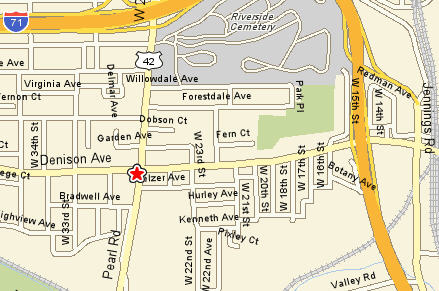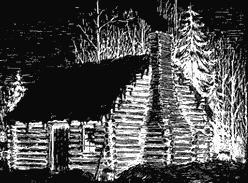|
| |||||
Main Page
From Brooklyn Centre Wiki
(→Street Names) |
(→Street Names) |
||
| Line 165: | Line 165: | ||
:[[Elvira Alley]] - North of Denison Ave (between W14th and W13th) | :[[Elvira Alley]] - North of Denison Ave (between W14th and W13th) | ||
:[[Fern Court]] | :[[Fern Court]] | ||
| + | :[[Forest St.]] - Forestdale Avenue | ||
:[[Foster St.]] - West 14th St. (between Redman Ave and Denison Ave) | :[[Foster St.]] - West 14th St. (between Redman Ave and Denison Ave) | ||
:[[Gertie St.]] - West 15th St. (north of Denison Ave) | :[[Gertie St.]] - West 15th St. (north of Denison Ave) | ||
| Line 185: | Line 186: | ||
:[[Redman Avenue]] - Between W.13th St. and W.15th St. | :[[Redman Avenue]] - Between W.13th St. and W.15th St. | ||
:[[Selzer Avenue]] - Between W.21st St. and W.25th St. | :[[Selzer Avenue]] - Between W.21st St. and W.25th St. | ||
| + | :[[Terrace St.]] - Willowdale Avenue | ||
:[[Walworth Avenue]] - | :[[Walworth Avenue]] - | ||
:[[Wieland St.]] - West 24th St. (between Denison Ave and Seltzer Ave.) | :[[Wieland St.]] - West 24th St. (between Denison Ave and Seltzer Ave.) | ||
Revision as of 03:59, 23 November 2006
Today is: November 1, 2024
WIKI for the History of Brooklyn Centre
|  Street map from Yahoo Maps |
Origins
BROOKLYN TOWNSHIP (TIME SPAN - 1816-18??)
|
Pioneers
- The first permanent white settler of Brooklyn was James Fish.
- The westside was known as the Lord and Barber allotment. All settlers would have purchased their land from Samuel P. Lord and Josiah Barber.
Property
The primary landowners of Brooklyn Centre were brothers, Ebenezer FISH Jr. and Moses FISH
Churches
- St. Barbara Church (Roman Catholic)
Schools
- East Denison Elementary School Cuyahoga OH 41.451 N 81.695 W
- West Denison Elementary School Cuyahoga OH 41.451 N 81.705 W
- St. Barbara Elementary School Cuyahoga OH
Transitions
1836 -
- The residents of the northern part of Brooklyn incorporated their area as "The City of Ohio" later more commonly known as Ohio City. (See page 304 of Griswold, S. O., The corporate birth and growth of the city of Cleveland : an address to the Early Settlers' Association of Cleveland Cleveland: Western Reserve and Northern Ohio Historical Society, 1884, 32 pgs.)
1837 -
- That part of Ohio City that lay south and west of the Barber & Sons allotment became known as Willeyville. Named, no doubt, for John W. Willey, Ohio City's first mayor. It was here that a riot almost occurred over the bridge built across the river at Columbus Street. (See page 305 of Griswold, S. O., The corporate birth and growth of the city of Cleveland : an address to the Early Settlers' Association of Cleveland Cleveland: Western Reserve and Northern Ohio Historical Society, 1884, 32 pgs.)
1864 -
- Cleveland annexes that part of Brooklyn township that lay north of Walworth Run.
1867 -
- Cleveland annexes another part of Brooklyn township south of the original "City of Ohio".
1872 -
- Cleveland annexes more of Brooklyn township.
Newspapers
- Mail and News
- The Town Crier - published by Harry M. Farnsworth
- The Cuyahogan - published by Harry M. Farnsworth (this was the successor of The Town Crier). Later owned and operated by A.E. Hyre.
Epidemics
1832 - Cholera
1904 - Typhoid Fever
- Started Jan 6, 1903 (9 cases). Total for the year: 3443 cases and 472 deaths. The severest outbreak occured shortly after heavy rains, in January of 1904, that washed immense quantities of mud into the lake. The following month had similar weather and another rise in the number of cases as typhoid infected sewage washed into the lake. By the end of the epidemic, 611 people had died.
Cemeteries
Street Names
Ever wonder how some streets came to be named what they were? In many cases, streets were named for the property owner or for a member of their family.
Many street names were lost forever in 1906 when the city of Cleveland decided to rename all north-south running streets with numbers.
Old Version vs New Version:
- Botany Avenue - Between W.14th St. and W.16th St.
- Bridgeview Avenue - West 23rd St. (south of Denison Ave)
- Clayton Avenue - South of Denison Ave
- Denison Avenue
- Doering Court - South of Denison Ave
- Elvira Alley - North of Denison Ave (between W14th and W13th)
- Fern Court
- Forest St. - Forestdale Avenue
- Foster St. - West 14th St. (between Redman Ave and Denison Ave)
- Gertie St. - West 15th St. (north of Denison Ave)
- Grandview St. - West 22nd St. (south of Kenneth Ave)
- Hapgood St. - West 16th St. (south of Denison Ave)
- Hazelwood St. - West 20th St. (south of Denison Ave)
- Howard St. - West 17th St. (south of Denison Ave)
- Hurley Avenue - South of Denison Ave
- Jennings Avenue
- Kenneth Avenue - South of Denison Ave
- LaSalle St. - West 18th St. (south of Denison Ave)
- Lookout St. - West 13th St. (between Redman Ave and Denison Ave)
- Lorain Avenue
- Lyle Court - West 22nd Place (north of Denison Ave)
- Park Place - West 18th St. (north of Denison Ave)
- Pearl St. - West 25th Street.
- Petty St. - West 15th St. (between Denison Ave and Botany Ave.)
- Pixley Court - West 21st St. (south of Denison Ave)
- Pixley St. - West 19th St. (south of Denison Ave)
- Redman Avenue - Between W.13th St. and W.15th St.
- Selzer Avenue - Between W.21st St. and W.25th St.
- Terrace St. - Willowdale Avenue
- Walworth Avenue -
- Wieland St. - West 24th St. (between Denison Ave and Seltzer Ave.)
- Willey Avenue -
For specific rules for street naming, see Cleveland city code - Section 305
Click here for other streets of Cleveland
Utilities
1833 - Attempt by Philo Scovill to create the Cleveland Water Company.
1846 - Cleveland Gas Light & Coke Company. Laid gas lines to provide gas for lighting.
1854 - An act is passed to build a water reservoir in the "City of Ohio"
Railroads
1834 - All of the following railroad companies were incorporated:
- Cleveland and Newburgh Railroad Company
- Officers: Aaron Barker, David H. Beardsley, Truman P. Handy, John W. Allen, Horace Perry, Lyman Kendall, and James S. Clarke.
- From the harbor at Cleveland to the eastern terminus near the corner of four townships, Newburgh, Warrensville, Cleveland, and Euclid.
- Rails made of wood. Train powered by a tandem team of two horses.
- Ohio Railroad Company - crossed the state through the lake counties.
- Cleveland & Pittsburgh Railroad - destination the state line in the general direction of Pittsburgh.
- Cleveland, Columbus & Cincinatti Railroad - destination Cincinatti.
- Cleveland and Warren Railroad - destination Warren.
- Cleveland and Erie Railroad - destination Ravenna and Portage County.
1851 -
- Cleveland, Painseville, & Ashtabula Railroad
- Junction Railroad - from Ohio City to Toledo
- The above two merged to form the Lake Shore & Michigan Southern Railroad
1861 - As the need to move around the city became more necessary, several street railways were formed.
- West Side Street Railway - Detroit Street to Superior Street.
1863 -
- St. Clair Street Railroad -
1869 -
- Brooklyn Street Railroad - A streetcar rather than a true railroad. Two miles in length.
1872 -
- Broadway and Newburgh Street Railroad - A streetcar rather than a true railroad.
- Southside Railroad - From Union Depot through Bank Street, Seneca Street, Scranton Avenue, and Jennings Avenue (modern name W.14th St.)
1874 -
- Superior Street Railroad - From Public Square to Willson Avenue (modern name E.55th St.)
1891
- Cedar and Jenning Line - From Lake View Cemetery to Brooklyn Bridge
Waterways
Parks
RECREATIONAL PARKS
AMUSEMENT PARKS
External Links
Aerial view from Terraserver
Street map from Yahoo Maps
Genealogy Research Tips
References
- "The World's" history of Cleveland : commemorating the city's centennial anniversary, Cleveland, Ohio: Cleveland World, 1896, 445 pgs.

